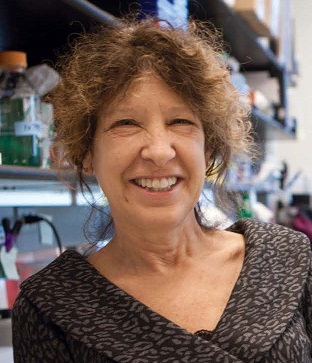Neurofibromatosis
Identification of Molecular and Cellular Contributions to Neurofibroma Formation and Growth



Posted December 12, 2018
Nancy Ratner, Ph.D., Jianqiang Wu, M.D., M.S., Carlos Prada, M.D., Kwangmin Choi, Ph.D., Children's Hospital, Cincinnati

Dr. Nancy Ratner,
Children's Hospital, Cincinnati
Children's Hospital, Cincinnati

Dr. Jianqiang Wu,
Children's Hospital, Cincinnati
Children's Hospital, Cincinnati

Dr. Kwangmin Choi,
Children's Hospital, Cincinnati
Children's Hospital, Cincinnati
Neurofibromas, which are benign tumors of the peripheral nerves, may occur sporadically in individuals; however, they are strongly associated with neurofibromatosis type 1 (NF1) syndrome. In NF1, both copies of the NF1 gene in Schwann cells (SC) lose their function to regulate the Ras family of oncogenic proteins. In these cases, tumorigenesis and disruptions between SC and the neuron may occur. In Dr. Nancy Ratner's previous research, her team created different mouse models, including one that showed neuron-SC disruption and a second that displayed both neuron-SC disruption and neurofibroma formation. In the process of developing these models, her team learned that 30% of a neurofibroma consisted of a type of white blood cell called a macrophage. Dr. Ratner has received nine Neurofibromatosis Research Program awards, but this continued research came from the Fiscal Year 2011 Investigator-Initiated Focused Research Award - Optional Qualified Collaborator to study neuron-SC disruption and tumorigenesis as well as to identify cellular and molecular steps in neurofibroma formation to improve understanding of its pathogenesis. More specifically, Dr. Ratner's team sought to use in vivo methods to test the relevancy of macrophages in the growth, development, and possible therapeutic resistance of neurofibromas.
In the first published study [1] from Dr. Ratner's team, they investigated whether macrophage infiltration of both mouse and human neurofibromas correlated with disease progression. They hypothesized that nerve macrophages are inflammatory effectors in neurofibroma development and/or growth. To test this, they used Pexidartinib (PLX3397), a drug that blocks macrophage infiltration, on the different mouse models. They learned that PLX3397 was more effective in established tumors of mice 7 to 9 months of age, compared to mice 1 to 4 months of age who had much smaller tumors. This connects to evidence that, as a tumor becomes more established, macrophages are recruited as a part of the immune response. Macrophages, in turn, release cytokines and chemokines, which stimulate blood vessel growth (increasing tumor volume) and proteases, which allows the tumor to infiltrate tissues more easily. This stage-dependent role of macrophages indicates that macrophage inhibitors could represent a therapeutic strategy for established neurofibromas.
In the most recent study [2] published by Dr. Ratner's team, macrophages were used for targeted therapeutic interventions in neurofibromas. They generated SC and macrophage gene expression data from neurons with functional Nf1 genes (Nf1+/+), Nf1 mutant (Nf1-/-) neurons, and neurofibromas in mice. In 1-month-old mice, Nf1-/- SC and macrophages did not significantly differ from their normal counterparts, but there were later, significant differences in neurofibroma cytokine gene expression. In addition, computational reconstruction of molecular networks and signaling, enhanced for inflammation pathways, predicted the changes of cytokines, chemokines, and growth factors. These predictions verified the presence of a macrophage chemo-attractant, colony stimulation factor 1, and predicted a role for type-1 interferon (IFN), a cytokine upstream in immune response signaling.[3] Dr. Ratner's experiments confirmed the computational prediction of type-1 IFN expression in neurofibromas and showed that treatment of neurofibroma-bearing mice with polyethylene glycolyated type-1 IFN-alpha-2b reduced overexpression of many other cytokines. These results are consistent with observed reduction of neurofibroma growth in a Phase II trial of PEGylated IFN-alpha-2b (NCT00678951).[4]
Findings from Dr. Ratner's group under this award have improved understanding of neurofibroma formation through identification of several potential interactions between NF1-/- SCs and macrophages. This work has provided a platform for numerous future investigations to target neurofibroma therapy. Potential areas of research include the examination of the genetic makeup of macrophages and SC and the signals influencing potential cross-talk for Ras and interferon pathways.
Publications:
[1] Prada CE, Jousma E, Rizvi TA, et al. 2013. Neurofibroma-associated macrophages play roles in tumor growth and response to pharmacological inhibition. Acta Neuropathol 125(1):159-68.
[2] Choi K, Komurov K, Fletcher JS, et al. 2017. An inflammatory gene signature distinguishes neurofibroma Schwann cells and macrophages from cells in the normal peripheral nervous system. Scientific Reports 7,43315. http://doi.org/10.1038/srep43315
References:
[3] Ivashkiv LB and Donlin LT. 2014. Regulation of type I interferon responses. Nat Rev Immunol 14(1):36-49.
[4] Jakacki RI, Dombi E, Steinberg SM, et al. 2016. Phase II trial of pegylated interferon alfa-2b in young patients with neurofibromatosis type 1 and unresectable plexiform neurofibromas. Neuro-oncology 19(2)289-297.
Link:
Last updated Friday, December 13, 2024














